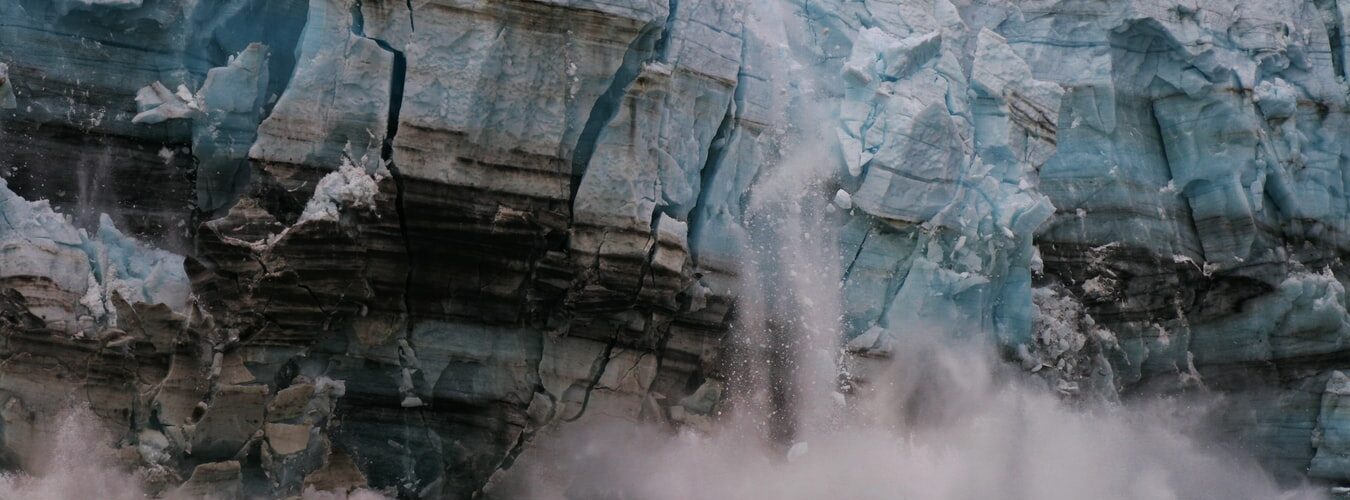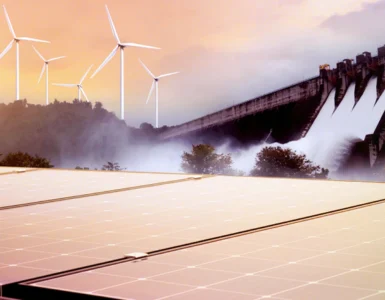You might have heard about fossil fuels or coal, but have you ever considered the extensive resources and efforts it takes to produce these fuels? Even more importantly, have you thought about the vast ecological footprint they leave behind? The crude reality is that fossil fuels, generated from decayed organic matter over millions of years, represent a non-renewable source of energy. Despite the significant contribution of energy production to the global economy, it’s impossible to ignore the grave environmental consequences it ushers in. Carbon emissions, a primary byproduct of energy production, are dramatically reshaping our planet.
Fossil Fuels and Their Carbon Footprint
The production and consumption of fossil fuels release vast amounts of carbon into the atmosphere, leading to severe climate change. This manifests in the form of melting glaciers and rising sea levels, resulting in coastal erosion and increased frequency and intensity of storm surges. Beyond that, we’re witnessing extended periods of drought, depleted oxygen levels, and a rise in sea levels, all of which pose significant threats to wildlife, disrupt human livelihoods, and potentially erode civilizations. Climate change, a term now all too familiar, is no longer a distant future’s problem; it’s a pressing issue demanding our immediate attention.
The Economic Argument: Fossil Fuels vs. Environment
There’s an opposing school of thought arguing that energy production significantly bolsters the economy. Any drastic changes to the existing energy production systems could potentially destabilize the economy and increase a nation’s unemployment rates. Hence, they advocate maintaining the status quo. While it’s undeniable that changes in energy production methods can temporarily affect economies, the argument is one-dimensional. Energy efficiency measures could potentially generate substantial employment, negating job losses. More importantly, we must recognize that our economy isn’t the only concern here. The environment and the earth’s delicate ecosystem are at equal, if not greater, risk.
Carbon Emissions: A Lingering Threat
Amongst the numerous environmental concerns that surface daily, carbon emissions have remained a consistent perpetrator over the past decades. Many dismiss it as a distant threat, but the reality is that it’s an imminent danger to humans and our environment. We owe it to future generations to take immediate and effective precautions. Changes to our environment instigate a domino effect of issues including the spread of airborne and waterborne diseases, decreased water quality, and deteriorating living conditions.
Global Warming and Its Impact on Glaciers
Appreciating the fragile nature of the earth’s environment necessitates understanding how global warming, a byproduct of energy production, is impacting our planet’s glaciers. The escalation in carbon and hydrogen production worldwide translates into increased heat in our atmosphere. This, in turn, accelerates glacier melting, leading to rising sea levels. These subtle yet relentless changes gradually encroach on our coasts, leaving us with less land as the sea level continues its upward journey.
In 2019, a study estimated that sea levels would rise by 30 cm by 2050 and 69 cm by 2100, compared to the levels in 2000. Under a high-emission scenario, this would be 34 cm by 2050 and a whopping 111 cm by 2100. Although seemingly small, these incremental changes can significantly impact ecosystems, including altering the migration patterns of animals. NASA has already noted observable effects of carbon emissions on our planet. As carbon rates escalate annually, we should brace ourselves for drastic changes in sea levels and other concerning areas globally.
Acid Rain and Depleting Oxygen Levels: Other Side-Effects of Carbon Emissions
While climate change and its implications dominate environmental discussions, other issues like acid rain and dwindling oxygen levels often remain under-discussed. The carbon cycle, which allows for the continuous circulation of carbon from the atmosphere to the earth and vice versa, is primarily responsible for much of the damage we witness. A key side-effect of this cycle is the production of acid rain. An excessive buildup of carbon and hydrogen in our atmosphere results in the generation of vast amounts of acid rain.
The Oxygen Giving Amazon and the Threat it Faces
The world’s forests and habitats play an essential role in regulating the earth’s climate. The Amazon rainforest in South America, for instance, contributes an impressive 16% of the world’s oxygen supply annually.
However, due to various factors, including heatwaves and droughts, over 200,000 acres of this vital rainforest burn each day. Despite the ongoing fires, the relentless production of carbon emissions accelerates deforestation, further threatening this ecological wonder. By limiting carbon emissions, we can drastically improve our atmosphere, allowing oxygen levels to rise again, ensuring a healthier planet for future generations.
Role of Governments in Combating Climate Change
While individual actions are vital, it ultimately falls on the shoulders of a nation’s government to enact meaningful change. Many perceive fluctuations in temperature, oxygen levels, and storm patterns as minor inconveniences in daily life. However, any actions taken to address these issues can significantly influence the escalating danger of global temperature rise. If even a single individual adheres to new rules for energy production, it can have a profound effect on the planet. It is crucial, therefore, for everyone on Earth to contribute to the fight against climate change.
Renewable Energy: A Sustainable Solution
Transitioning from fossil fuels to renewable energy sources is a tangible solution to the crisis we’re facing. The development and use of renewable energy technologies such as solar, wind, and hydro power can significantly decrease carbon emissions. Furthermore, advancements in energy storage solutions such as batteries and fuel cells can ensure a reliable energy supply, even when the sun isn’t shining or the wind isn’t blowing.
Moreover, renewable energy can create jobs. As of 2021, the renewable energy sector employed around 12 million people worldwide, according to the International Renewable Energy Agency (IRENA). With increased investment and supportive policy frameworks, the number of jobs in this sector could reach 30 million by 2030.
Public Awareness and Education: Essential Tools in the Fight Against Climate Change
Enhancing public awareness about the adverse effects of fossil fuels and the advantages of renewable energy is crucial in the battle against climate change. Governments, non-profit organizations, and educational institutions should take active roles in promoting environmental literacy. By understanding the implications of our choices and actions, we can make informed decisions that will pave the way for a more sustainable future.
Conclusion: A Call to Action
Addressing climate change requires a holistic approach that considers economic stability, environmental conservation, and societal wellbeing. We cannot afford to ignore the drastic implications of our current energy production and consumption methods. Transitioning to renewable energy, implementing stricter regulations on carbon emissions, preserving vital ecosystems like the Amazon, and fostering public awareness are all critical steps towards mitigating climate change. As individuals, communities, and nations, we have a shared responsibility to act now for the sake of our planet and future generations.
The conversation about fossil fuels and climate change goes beyond just economic considerations. It is a multifaceted discussion involving the environment, public health, and our moral responsibility towards future generations. We all play a role in shaping the future of our planet. The question is, what kind of legacy do we want to leave behind?





Add comment